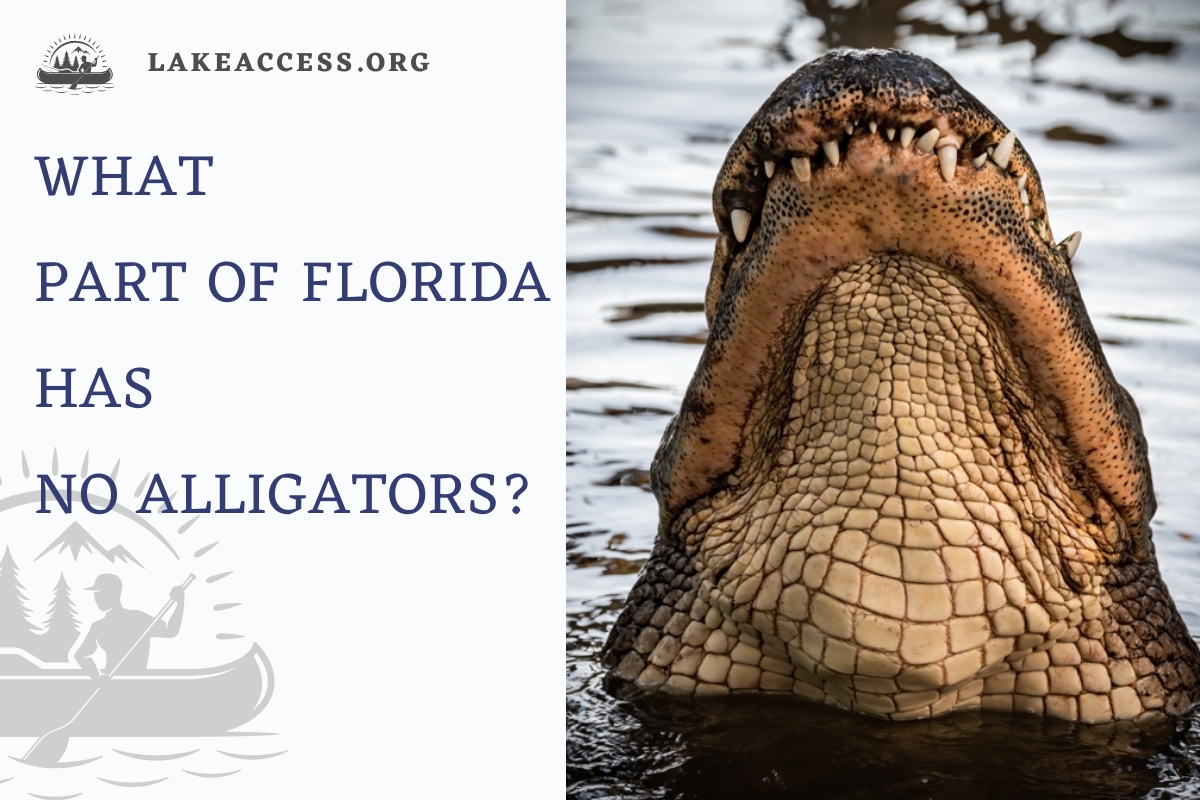Welcome to the world of Florida, where the sun shines bright and alligators roam wild! But wait, are alligators the only sight to capture in the Sunshine State? Think again. While Florida is renowned worldwide for its vast alligator population, the region shelters specific locations sanctuaries, in essence, devoid of these large reptiles that are completely alligator-free. This aspect can indeed be surprising, considering the stereotype Florida generally holds, but it’s absolutely true. Living in Florida is not always about wrangling with gators; there are plenty of spaces where people and pets can wander without worry.
Why Not Every Water Body in Florida Has an Alligator
Understanding Alligators’ Habitat Preferences
While the impression might be that these skin-clad creatures lurk in every nook and cranny, that’s not the reality. Alligators, akin to most creatures, exhibit a keen knack for specific environments. Ambiances that offer them high temperatures, slow current rivers, extensive marshes, and swamps are equivalent to their natural abode. Add to that plenty of sunlight for their cold-blooded constitutions, shallow waters to build their nests, and easy prey to feed upon, and you’ve just described an alligator’s ideal home.
Florida’s Climate and Alligator Population
The Tropical climate of Florida is undoubtedly a trophy zone for these sun-loving creatures. However, not every bay or waterfront in Florida can qualify as a suitable alligator habitat. There exist particular spots that miss the mark when it comes to fulfilling this criterion. Therefore, not all water bodies are home to these reptiles.
Factors Attracting Alligators to Human-Populated Areas
Observing alligators venturing closer to human settlements is often an indication of their habitat being endangered. The gradient of threat encroaching upon their rightful territories forces them to find solace and food in territories alien to them. If an area checks the apparent needs of an alligator, i.e., food, water, and shelter, the alligator will not hesitate to claim it, no matter how residential it happens to be.
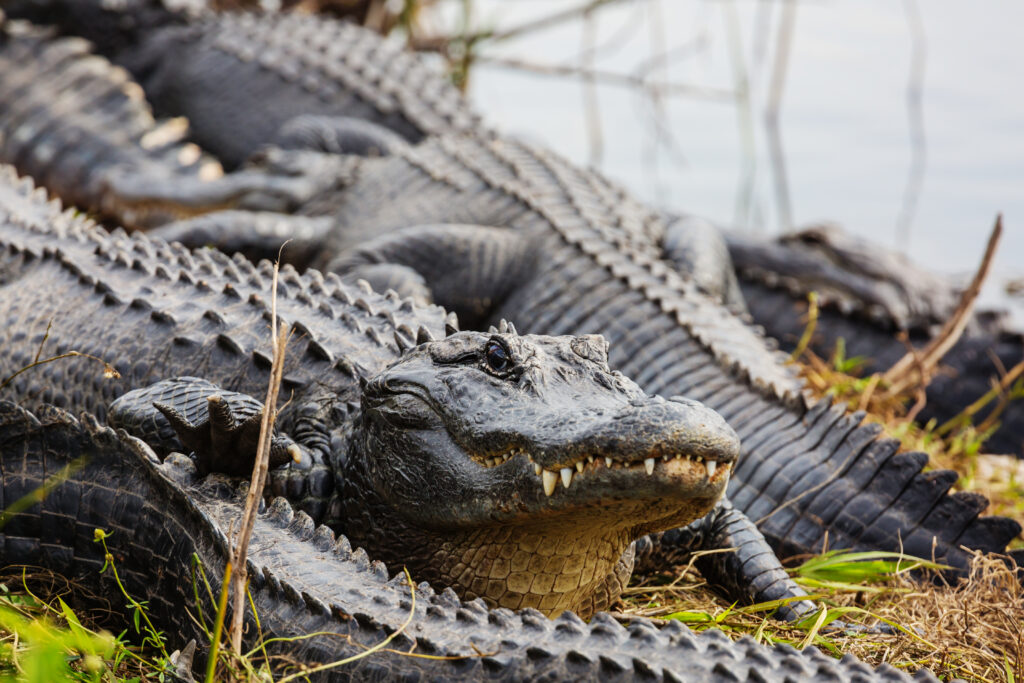
Florida Alligator Free Lakes
Alligators can be found in almost every part of Florida, as it is their natural habitat. However, in some areas in Florida, alligator sightings are less common. For example, some of Florida’s most urbanized and densely populated areas, such as downtown Miami or the highly developed areas of Tampa, may have fewer alligators because their natural habitat has been significantly altered or destroyed.
Florida has over 30,000 lakes, and almost all are home to gators, so always be careful while walking around Lakes in Florida. There’s a famous saying in Florida that if the water is more than 2 inches deep, assume there are alligators and venomous snakes in it.
Labeling a freshwater body in Florida ‘alligator-free’ is challenging due to its widespread distribution, natural habitat preferences, and mobility. However, typically ‘safer’ areas due to careful monitoring, popularity among swimmers, and human activity include:
- Lake Eola in downtown Orlando. This lake is specifically monitored, and any alligators found are immediately relocated.
- Blue Lake in Chipley, Washington County, is a popular tourist spot and is also closely watched.
- Silver Lake in Leesburg is another monitored body of water with sufficient recreational activities to deter alligators.
Again, I recommend verifying the current status with local safety and wildlife officials before visiting any water body in Florida.
Always remember, a gator-free lake today may not be gator-free tomorrow. Be vigilant and adhere to cautionary guidelines when in proximity to water bodies in Florida to ensure safety.
Also Checkout: Most Alligator-infested Lakes In North Texas
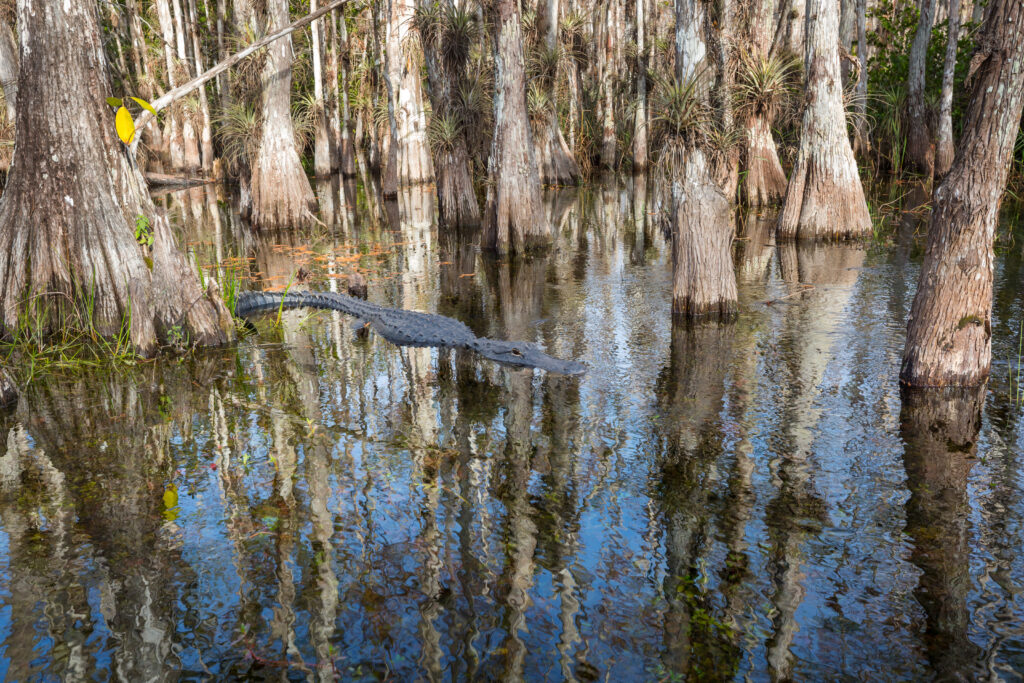
How Florida Authorities Manage Alligator Population
Trapping and Relocation of Nuisance Alligators
The government of Florida has also stepped up to the task and has implemented effective strategies to handle the state’s alligator populations. Capturing and relocating problematic alligators forms the core step of this initiative. Nuisance alligators, especially those posing a direct threat to humans, pets, or property, are handled via these operations.
Florida’s Alligator Management Program
The Florida Fish and Wildlife Conservation Commission also runs the Statewide Nuisance Alligator Program (SNAP), working persistently towards the management of this reptile population, further aiming at a secure human-alligator coexistence.
How to stay safe from alligators in Florida
- Alligators stay beneath the water and wait for the food to approach, and then they attack.
- Avoid walking around the shoreline if the water isn’t clear.
- Always Stay on the Sidewalk.
- Don’t go near grassy areas that have a swamp or lake nearby, as they love to hide in vegetation areas because it provides good camouflage.
- Avoid going out in the evening.
- Don’t walk by the shoreline at sunrise and sunset.
- If you encounter an alligator, keep a safe distance of at least 50 feet.
- Don’t take selfies; don’t approach to check if it’s alive.
- Stay cautious. It’s better to be safe than sorry.
FAQs
Are there any areas in Florida where alligators are not found?

Alligators are native species of Florida and are found throughout the state, including in wetlands, swamps, marshes, rivers, lakes, and ponds. However, alligator sightings may be less common in some urbanized areas or highly developed regions where their natural habitat has been significantly altered. Also, the northern regions of Florida are considered the least alligator-crowded.
That being said, it is essential to note that alligators can still be found in unexpected places, such as golf courses, swimming pools, and even in urban neighborhoods near bodies of water. Therefore, it is always a good idea to be cautious and aware of your surroundings when in Florida, especially when near bodies of water.
How common do you see alligators in Florida?
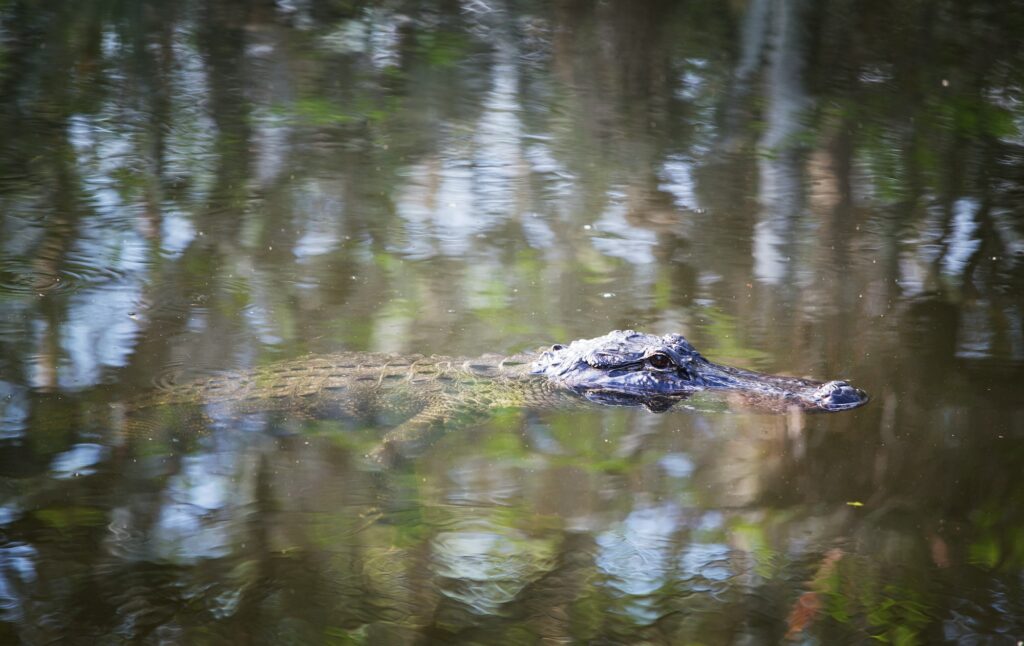
It is very common to encounter Alligators in Florida. People often report alligators lying in the backyards and front doors. Because of their large population, they are everywhere in Florida.
Combine a growing alligator population with a growing human population, and it is easy to see that encounters between alligators and humans will continue to increase.
The American alligator is native to the southeastern United States and is found in Alabama, Arkansas, Georgia, Florida, Louisiana, Mississippi, North Carolina, Oklahoma, South Carolina, and Texas. In many cases, the loss of this natural fear is due to people feeding alligators, which is against the law. Alligator bites are most likely to occur in or near water, as alligators are not well-equipped to catch prey on dry land.
What part of Florida has alligators?
Alligators are everywhere in Florida, especially near the freshwater rivers, lakes, marshes, and swamps. In bad weather, it is common to find displaced alligators on the streets, in local swimming pools, and even in your backyard.
American alligators are found mainly in South Florida, where they live in brackish and saltwater habitats such as ponds, bays, and creeks of mangrove swamps. Alligators are a top predator that has entered popular culture and frequently appear in the news, usually in connection with some crazy Florida story.
The state also traps alligators that are longer than three feet and pose a danger to people, their pets, or their property. Although bites from alligators resulting in serious injury are rare in Florida, the FWC recommends taking precautions when enjoying yourself in and around water.
How Many Alligators does Florida have?
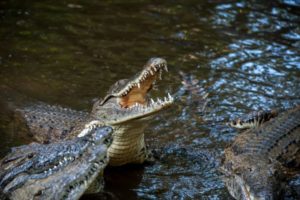
Florida is home to an estimated two million American alligators, meaning there is one alligator for every twenty-one acres of land in the state. But hear not; You are far more likely to injure yourself in some other way than to be eaten by an alligator.

